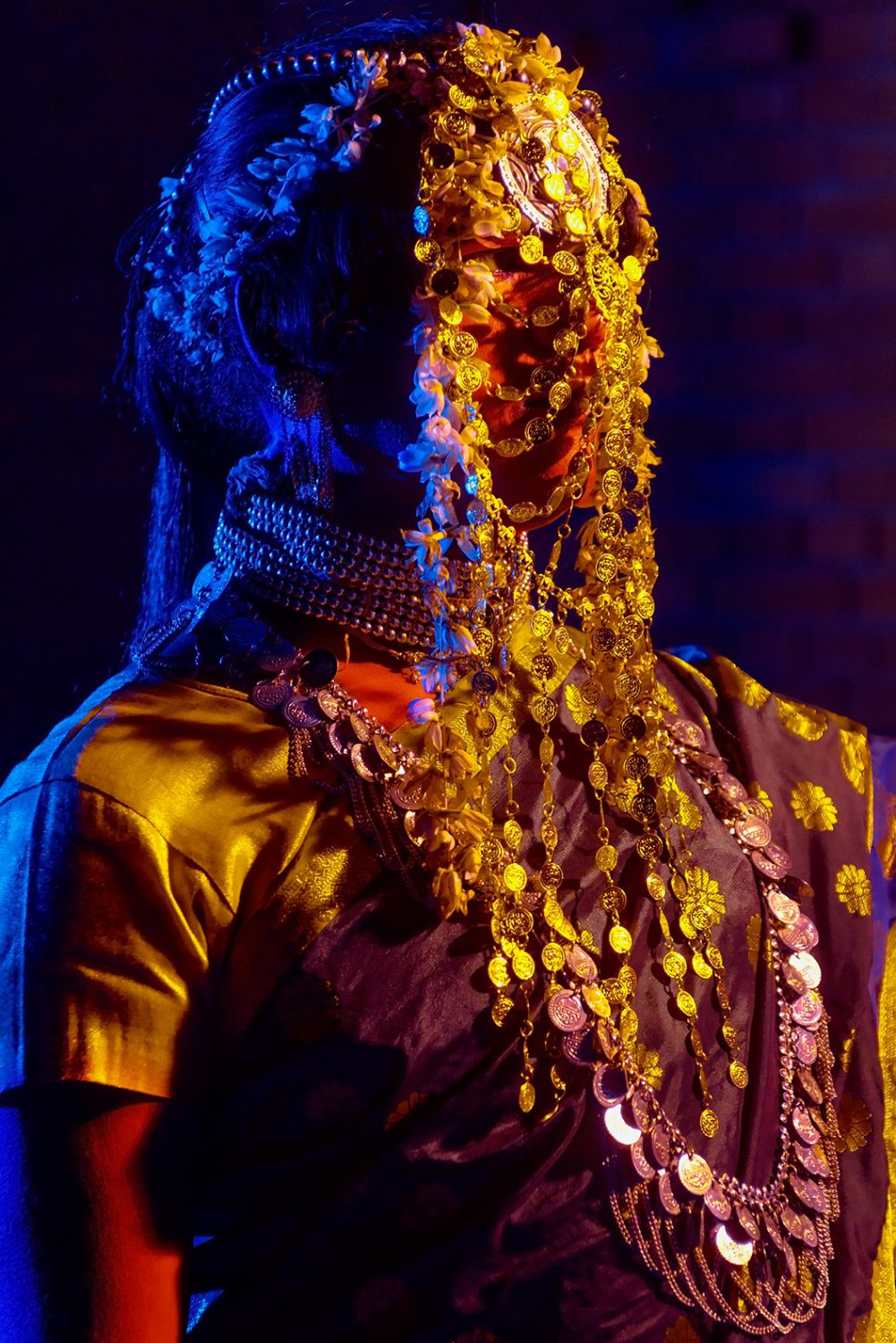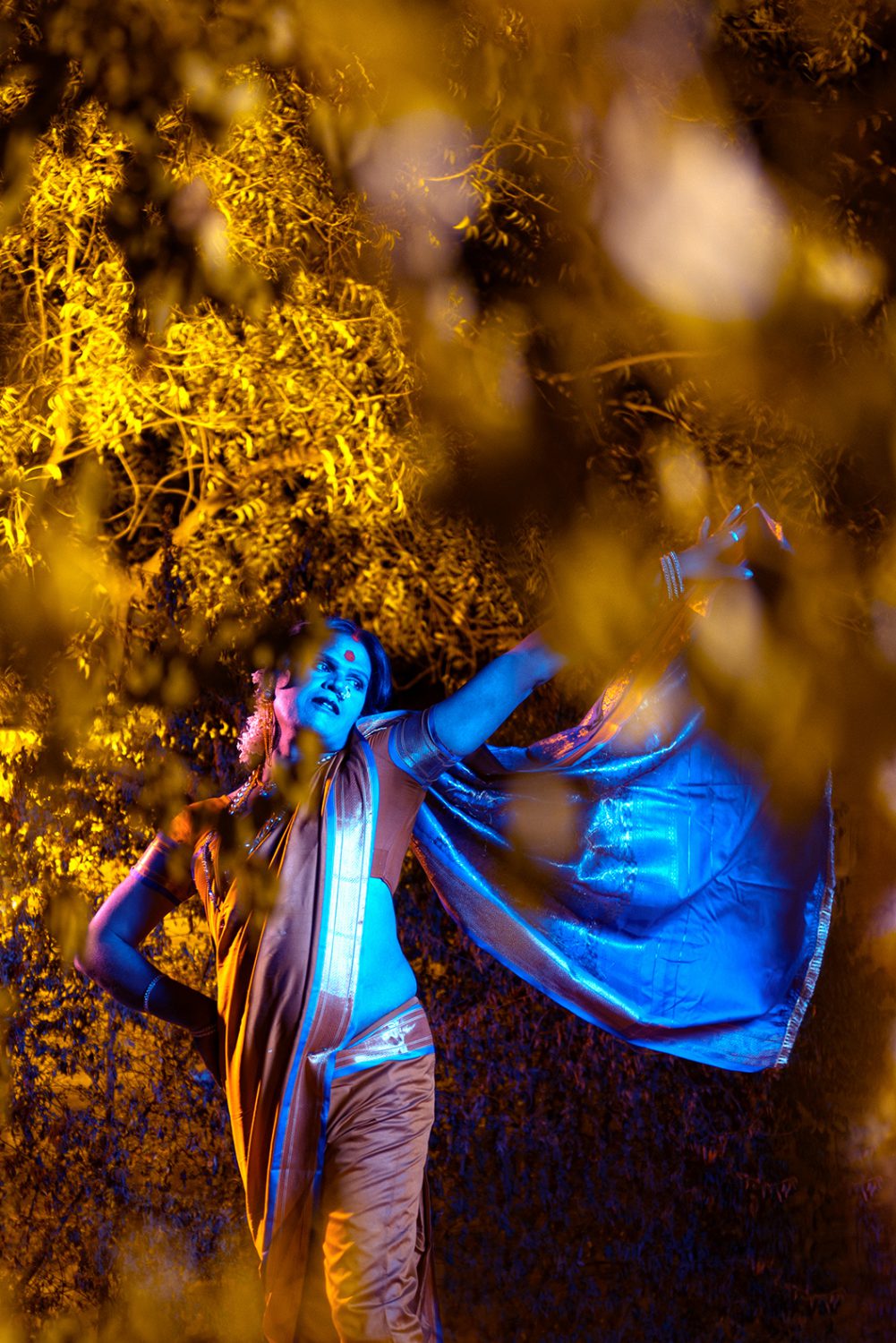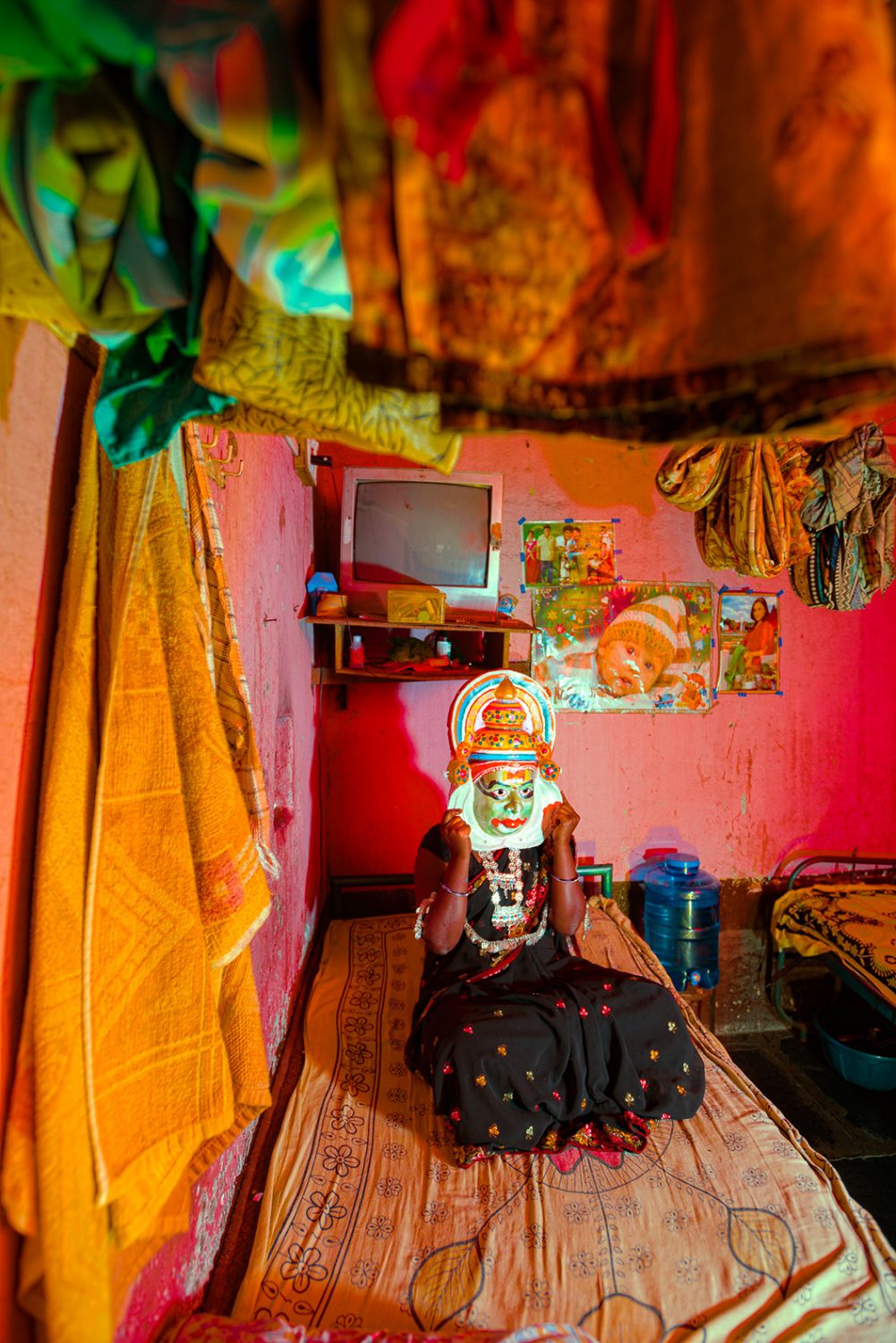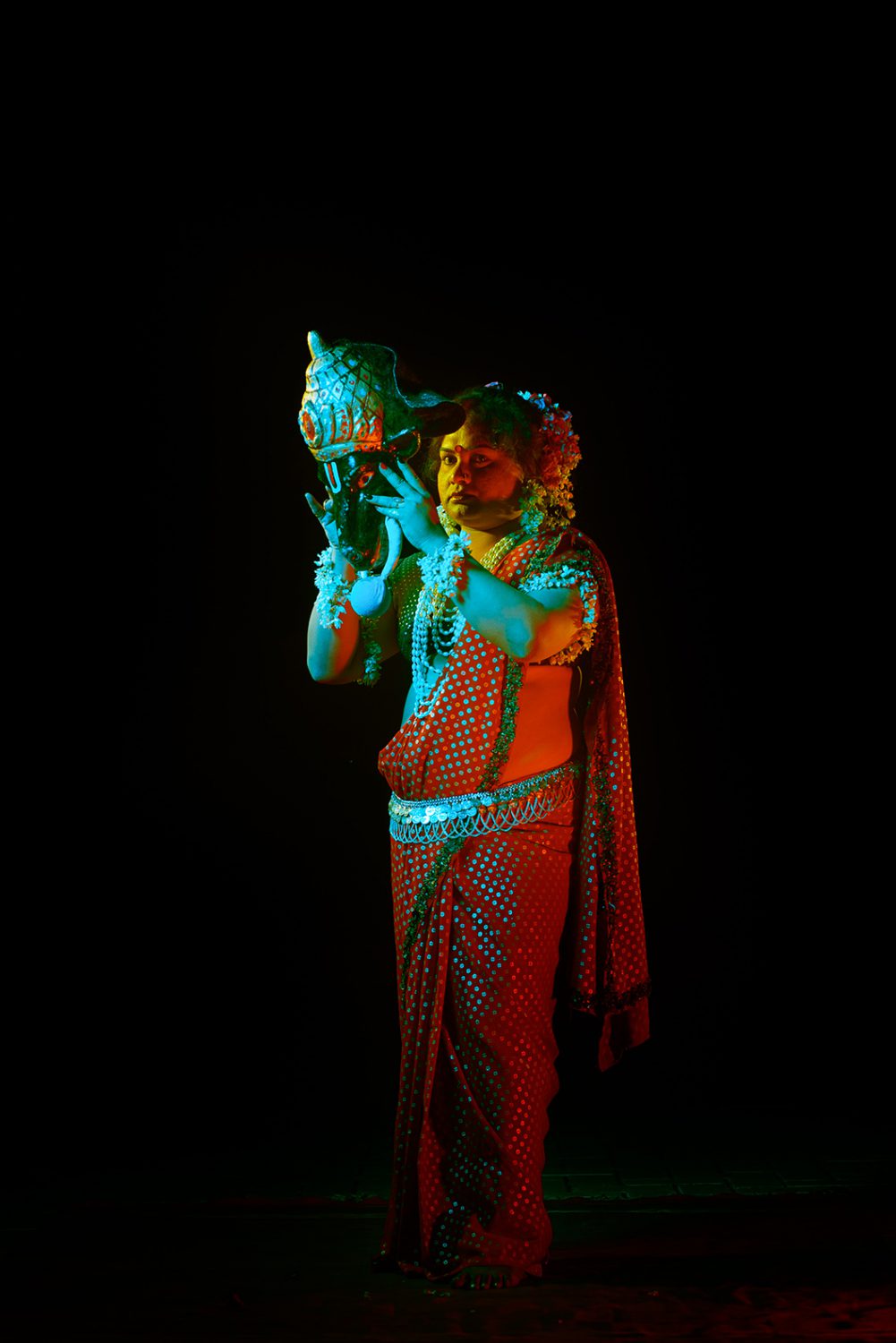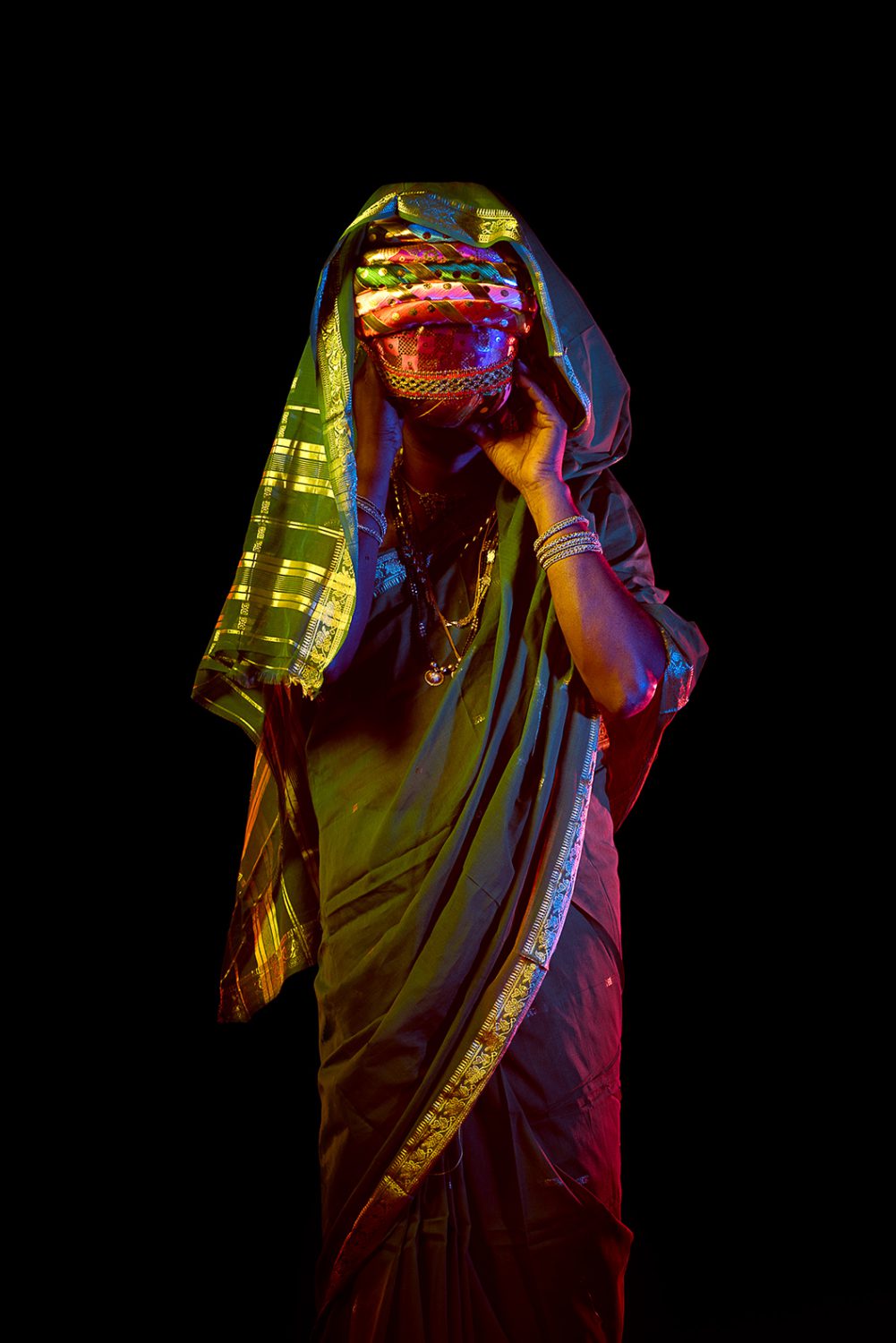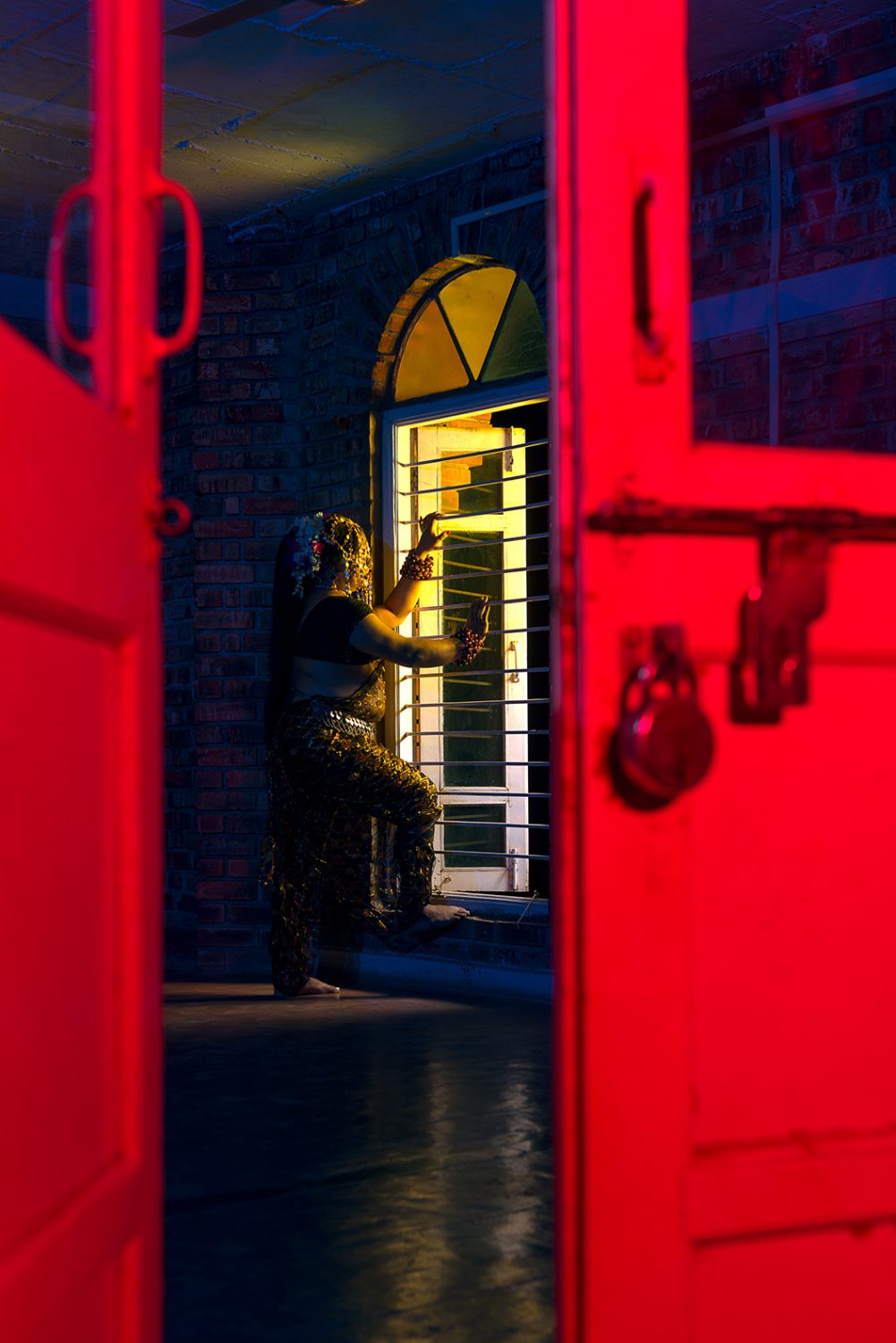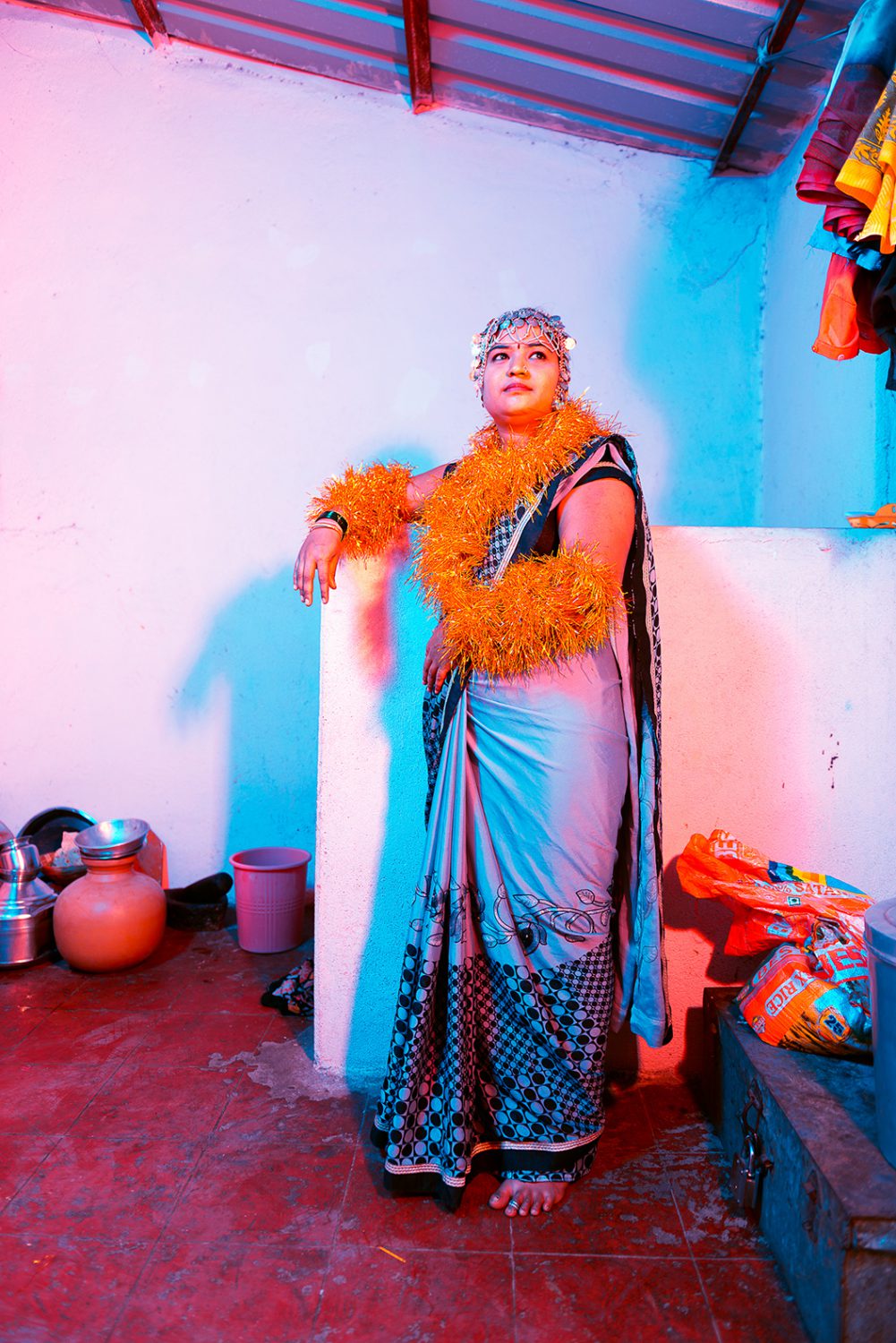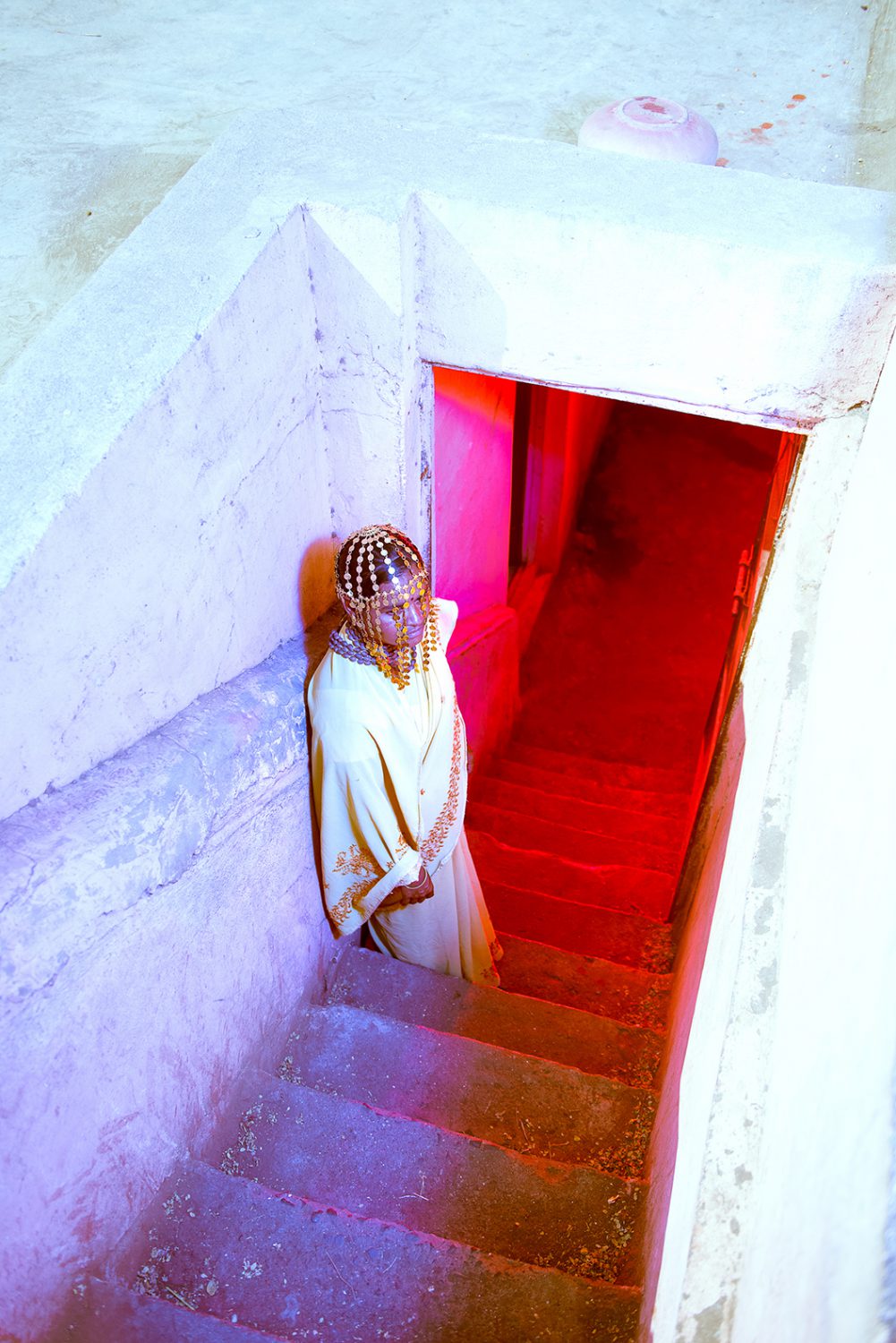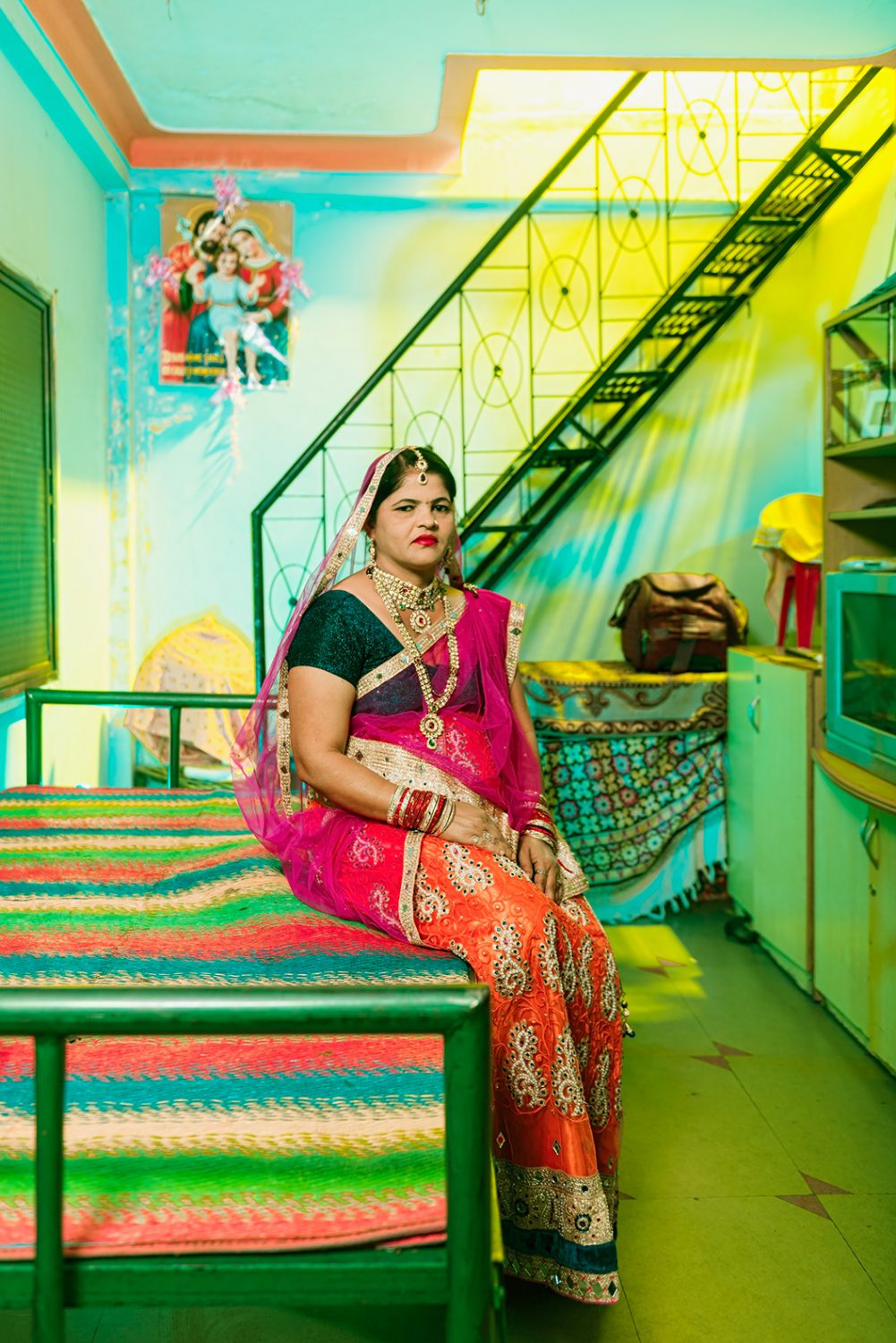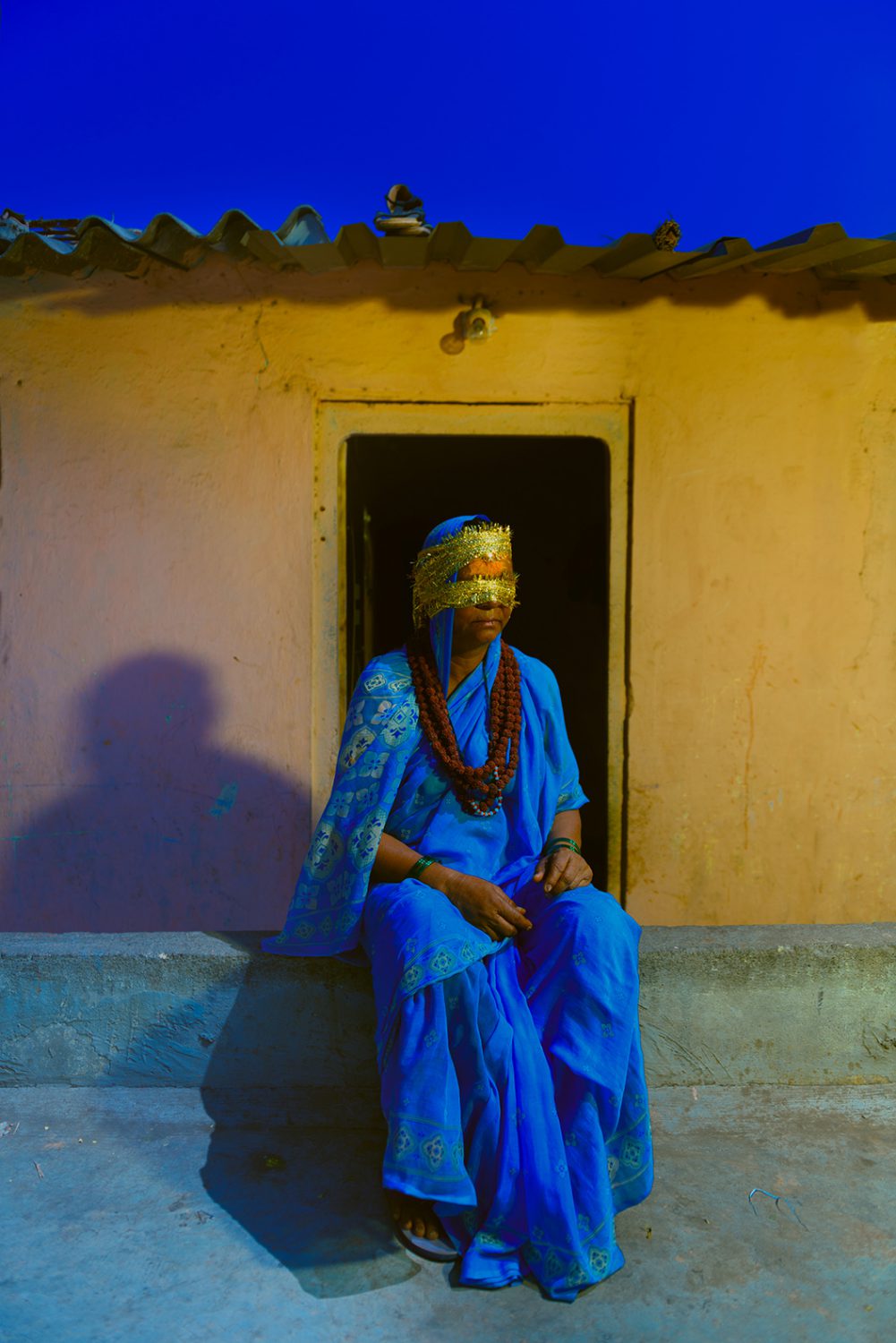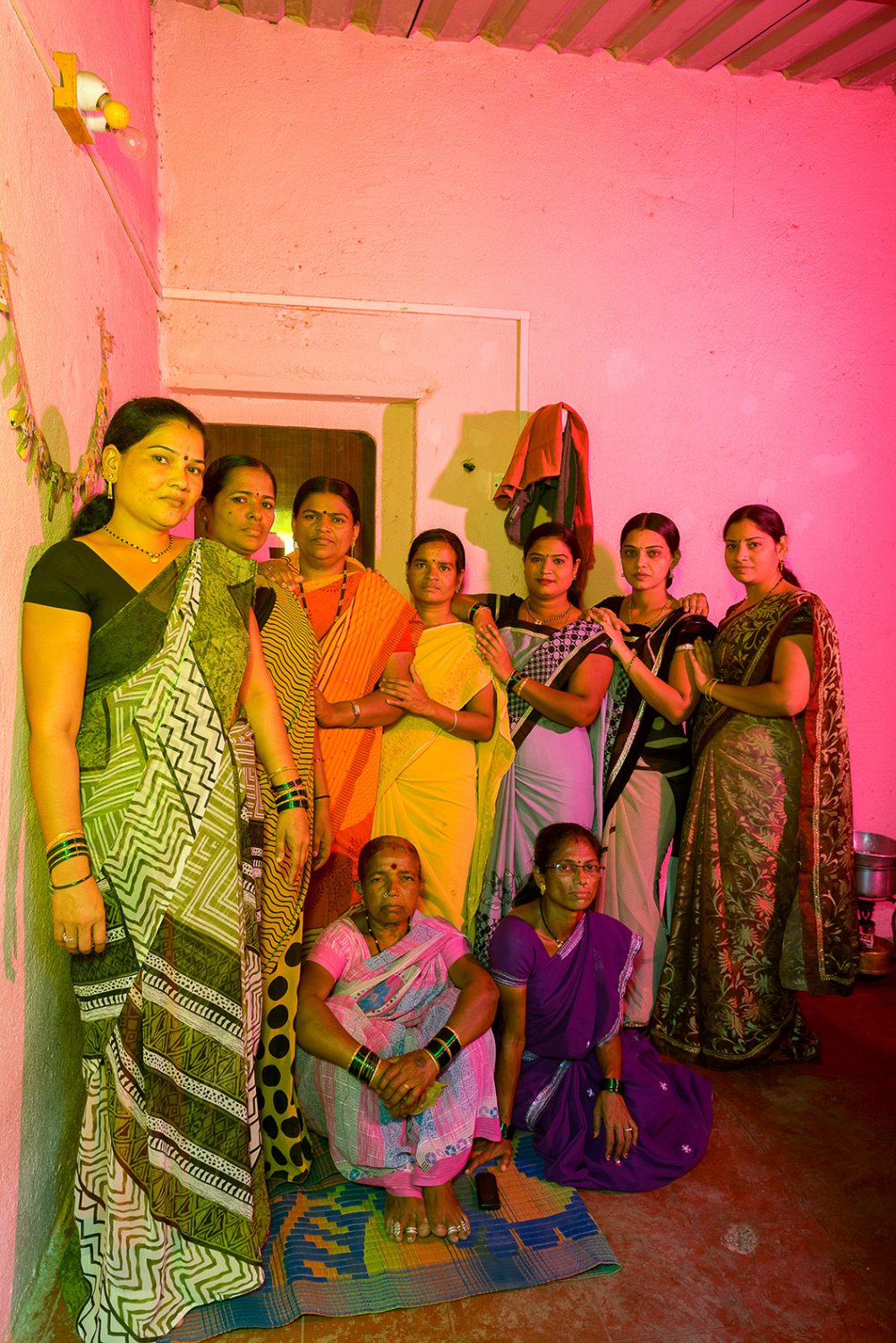Nityasumańgalī
Between the sacred and the sexual
Within Indian native discourse, the devadasi, was both a public persona, who led Hindu processions through the streets, and a cloistered figure, a temple servant. Attached to both Saivite and Vishnu temples, a devadasi was considered a nityasumangali or ‘ever auspicious female’ who, at a young age, was married to god, her eternal divine husband. An important figure within Hinduism, her sexuality was identified with the power of the goddess Shakti and believed to balance the ambivalent nature of the divine, ‘the nityasumangali was a person guaranteed as “danger-proof”: she should be present in those critical moments of balancing the auspicious and the inauspicious’. Through her knowledge of sacred dance and music, she played a pivotal role in temple ritual as mediator between the deity and the devotees
The devadasi today is reduced to a prostitute with no respect from society and often times oppressed by the state.
The devadasi stood at the intersection or ‘intercrossing’ of several oppositional European beliefs. To eighteenth-century travellers and Christian missionaries, dance could never be in service to god, nor could sacredness and sexuality co-exist easily. She was also unmarried and her independence—both socially and financially—empowered her.
These combined traits could pose a threat to the colonial establishment. Unlike the majority of British and Indian women devadasis, ‘were free to engage in sexual relations with any man of the proper caste without public censure and were able to inherit property and bequeath it to their biological or adopted daughters.
While similarities between the Indian temple dancer, geisha of Japan and high priestess of Athens have been drawn, it is the sacredness in concert with the devadasi’s erotic knowledge that has no parallel in the West.
Without an understanding of the devadasi’s religious role, and the gradual erosion of power of Indian rulers, which led to artists, musicians, and entertainers losing patronage across the sub-continent, the devadasi would become a visible target of the nineteenth-century British evangelical and social reform movement, epitomising all that was regarded as immoral in India.
These portraits of Devadasi’s are from a place in Sangli, Maharashtra, where the devadasi community continues in its traditions with pride upholding all of their unique values pertinent since before the foreign invasions and at the same time are fighting to win back their rights to equality and a life of dignity within today’s society.
-

- Attached to both Shaivite and Vishnu temples, a devadasi was considered a nityasumangali or ‘ever auspicious female’ who, at a young age, was married to god, her eternal divine husband. An important figure within Hinduism, her sexuality was identified with the power of the goddess Shakti and believed to balance the ambivalent nature of the divine, ‘the devadasi-nityasumangali was a person guaranteed as “danger-proof”: she should be present in those critical moments of balancing the auspicious and the inauspicious’. Through her knowledge of sacred dance and music, she played a pivotal role in temple ritual as mediator between the deity and the devotees
-

- The devadasi stood at the intersection or ‘intercrossing’ of several oppositional European beliefs. To eighteenth-century travellers and Christian missionaries, dance could never be in service to god, nor could sacredness and sexuality co-exist easily.
-

- The dancers served the Gods themselves by taking care of their statues and performing for them as well as protecting them during processions outside the temples. They enhanced the prestige of the kings, who had a god-like status, by dancing at his processions. Sponsoring dance-worship and elaborate festivals was a way for priests to draw crowds, thereby filling the coffers of the temple and the kings.
-

- An intriguing textual slippage presents itself in Hindu Manners written by a French missionary, Abbé J.A Dubois, in which he quotes a Tamil saying: “Vesya darisanam punyam papa nasanam!” which means, “To have intercourse with a prostitute is a virtue which takes away sin”. The editor, Henry Beauchamp, adds a correction: “The real translation is, ‘Looking upon a prostitute’”. Unbeknown to the author, then, this correction—in which the Tamil ‘darisanam’ translates as the Sanskrit darshan—places the devadasi in a revered position. Through this mistake, Dubois represents the figure’s spiritual and cultural agency, and implicitly reveals how to even set eyes upon a temple dancer is to receive a boon. The majority of European witnesses who viewed Indian religious practices and rituals from the outside—whether figuratively or literally—failed to grasp these numinous elements.
-

- Dancers were ritually married to a temple deity while making an alliance with a patron. For their service to the temple, they received an education in dance and language at the temple. The devadasis did not renounce life outside the temples. Some became landowners through their patronage, and they could also have relationships with other men besides the deity and the patron.
-

- Protestantism had to transform Catholicism—as well as other religions—into paganism. In this context, the religious practices of what we today would phrase as Hinduism, was perceived as pagan or underdeveloped religion.
-

- A staple of their repertoires were satirical farces mocking repressive relationships, male sexuality and the traditional mores of Hindu society. To see devadasis merely as passive victims of male exploitation is to gravely underestimate them
-

- Throughout the sub-continent, the British direct rule of princely kingdoms led to artists losing their royal support and returning to their native homelands or moving to urban areas. This resulted in the decline of the system of patronage that had supported the devadasi and other temple service castes since the Chola period. . . . Many devadasis lost their livelihood and homes, some turning to prostitution.
-

- A face that glows like the full moon, skills of conversation, matching the countenance. Eyes filled with compassion, matching the speech. . . . These are the ornaments that adorn Palani, when she is praised by kings. Appeasing Radha by Muddupalani (ca. 1730-90) – A devdasi
-

- Modern-day devadasis are trying to make the transition to a world that offers women more choices than just the oldest profession.
-

- While similarities between the Indian temple dancer, geisha of Japan and high priestess of Athens have been drawn, it is the sacredness in concert with the devadasi’s erotic knowledge that has no parallel in the West.
-

- While they operated in an oppressive, caste-stratified society, by creating distinctive female subcultures, governed by a separate set of values, they found ways to challenge dominant society and the constraints imposed upon women.
-

- By the end of the nineteenth- century and early twentieth-century, the Christian missionaries, Victorian social reformers and Indian Westernised elite would discredit the devadasi institution as an affront to the sanctity of Hindu marriage and a threat to patriarchal ideals of feminine purity, respectability and domesticity.
-

- Let us pay homage to the great art and artists that the devadasi tradition produced by reaching out to the last communities that still harbour the tradition.
